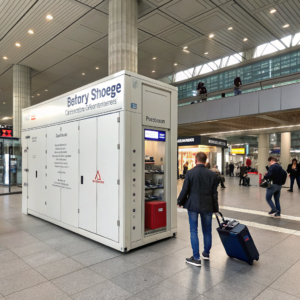How Do the Seasons Affect Solar Energy Production?
•
Wondering why your solar panels produce wildly different amounts of energy in July versus January? Seasonal changes dramatically impact solar output through sunlight angles, temperature, and weather conditions.
Solar production fluctuates seasonally due to varying sun angles (higher in summer, lower in winter) and daylight duration - summer typically generates 2-3x more power than winter in temperate climates.
While solar panels work year-round, understanding these seasonal patterns helps homeowners set realistic expectations and optimize their systems for maximum annual production.
High Sunlight vs. High Heat in Summer: What's the Trade-off?
Does more summer sunlight always mean better solar production? Surprisingly, extreme heat can partially offset those long sunny days through a little-known efficiency quirk.
While summer offers more daylight hours, solar panel efficiency decreases 0.3-0.5% per °C above 25°C (77°F), meaning peak summer temperatures can reduce output by 10-25% during heat waves.
Understanding Summer Solar Performance
-
The Solar-Temperature Relationship
- Ideal operating temperature: 25°C (77°F)
- Efficiency loss formula: (Cell temp - 25°C) x temp coefficient
- Common panel coefficients: -0.3% to -0.5%/°C
-
Mitigation Strategies Strategy Effectiveness Cost Elevated mounting +3-7% cooling $$ Light-colored roofs +2-5% $ Ventilated racking +5-10% $$$ -
Regional Considerations
- Desert climates: High irradiance but significant heat losses
- Coastal areas: Lower temperatures preserve efficiency
- Northern latitudes: Cooler summers minimize heat impact
"Proper airflow beneath panels can lower operating temperatures by 15-20°C, recovering 5-8% of lost efficiency on hot days" - Solar Energy Industries Association
Low-Angle Sun and Snow in Winter: Challenges and Solutions
How do solar panels perform when the sun is low and snow piles up? Winter brings unique challenges that require different optimization strategies than summer.
Winter solar production decreases due to lower sun angles (reducing intensity) and shorter days, but snow reflection can boost output by 10-15% when panels are clear, while snow-covered panels may produce nothing.
Maximizing Winter Solar Output
-
Installation Adjustments for Winter
- Steeper tilt angles (latitude +15°)
- Increased row spacing to prevent shading
- Anti-reflective coatings for low-light performance
-
Snow Management Techniques Method Pros Cons Self-cleaning No effort Requires proper tilt Manual removal Immediate results Safety risk Automated heating Consistent performance High cost -
Technology Enhancements
- Bifacial panels benefit from snow reflection
- Microinverters minimize snow shading losses
- Cold weather actually improves panel efficiency
Key Insight: Northern installations should prioritize proper tilt over aesthetics - a 45° winter-optimized angle can yield 15-20% more December output than a shallow 20° roof pitch.
Designing for Year-Round Energy Balance: How to Optimize Your System?
Should you design your solar system for peak summer output or reliable winter production? Smart system design balances these seasonal extremes for optimal annual performance.
The most cost-effective systems size for winter production (when demand is often highest) while using summer surplus to offset other seasons, typically requiring 20-30% more capacity than summer-only designs.
Year-Round Optimization Strategies
-
Sizing Considerations
- Summer output typically 2-3x winter
- Battery storage extends summer surplus into winter
- Oversizing inverters helps capture winter morning/evening sun
-
Component Selection Feature Summer Benefit Winter Benefit Bifacial Moderate Significant PERC cells High Moderate Tracking High Limited -
Financial Planning
- Net metering policies affect seasonal value
- Time-of-use rates may favor winter production
- Tax incentives often make oversizing economical
Best Practice: Most homeowners achieve optimal economics by sizing systems to cover 80-90% of annual needs rather than 100% of winter demand, avoiding expensive overbuilding.
Conclusion
Seasonal solar variations are natural and predictable - proper system design and realistic expectations transform these fluctuations from problems into manageable production patterns.





